Crop Conditions Suggest Above-Trend Yields
TOPICS
SoybeansMegan Nelson
Economic Analyst
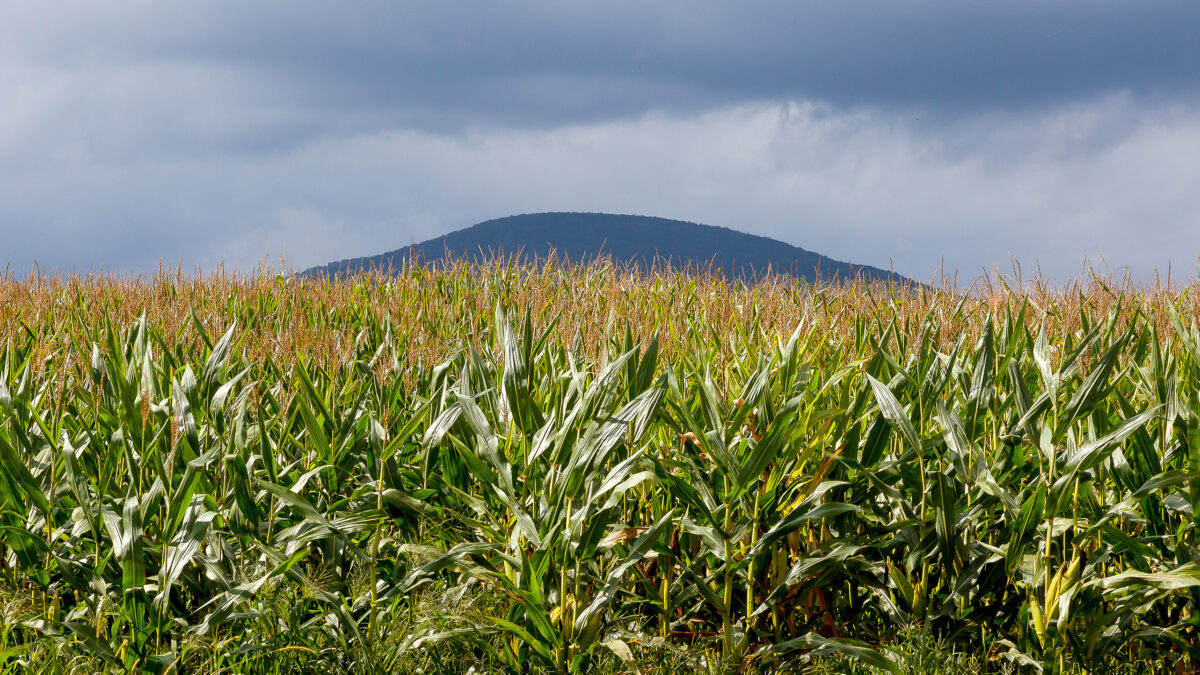
photo credit: North Carolina Farm Bureau, Used with Permission
Megan Nelson
Economic Analyst
July and August are key growing months for corn and soybeans and are also important in setting expectations for final U.S. average corn and soybean yields. USDA’s weather-adjusted trend yield model for corn and soybeans monitors a combination of precipitation and temperatures from June through August to forecast corn and soybean yields. While many will discount the judgment-based weekly crop conditions reports, they do serve as a proxy for recently experienced weather conditions across the Corn Belt and can be used as an indicator of U.S. average corn and soybean yields.
Above-Trend Corn Yields Expected
USDA’s August 6 Crop Progress report revealed that 71 percent of the U.S. corn crop is in good-to-excellent condition, down 1 percentage point from last week. The percentage of the corn crop in poor-to-very-poor condition increased 1 point to 10 percent last week. On a year-over-year basis, the corn crop remains improved over last year’s 60 percent good-to-excellent rating and is 3 percentage points above the five-year average of 68 percent. The corn ratings reflect favorable growing conditions across much of the Corn Belt. Figure 1 highlights the good-to-excellent rating for corn as of the week ending August 5.
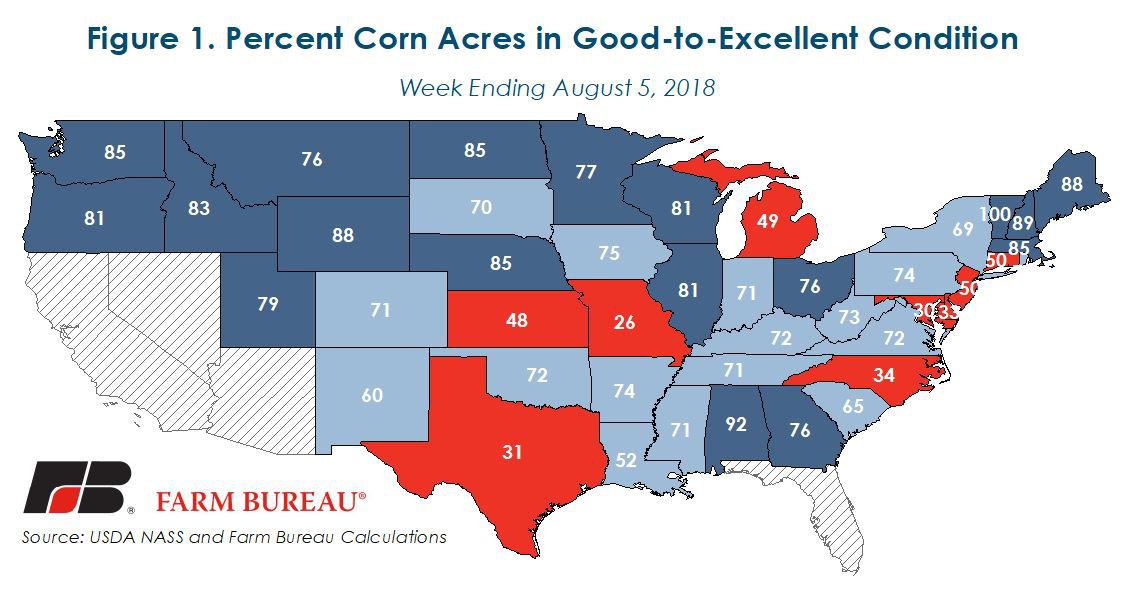
A linear-trend of corn yields from 1960 to 2017 results in a forecasted 2018 corn yield of 169 bushels per acre. However, based on current conditions, analysts expect average corn yields to exceed USDA’s current projection of 174 bushels per acre. The historical relationship between good-to-excellent ratings and crop yield deviations supports the market expectation for above-trend yields and reveals a statistically significant relationship, Figure 2. Based on the regression results, and the August 5 good-to-excellent rating of 71 percent, the corn yield deviation from trend is projected at 4.12 percent. This simple regression model would imply a U.S. average corn yield of 176 bushels per acre, which is in line with industry expectations.
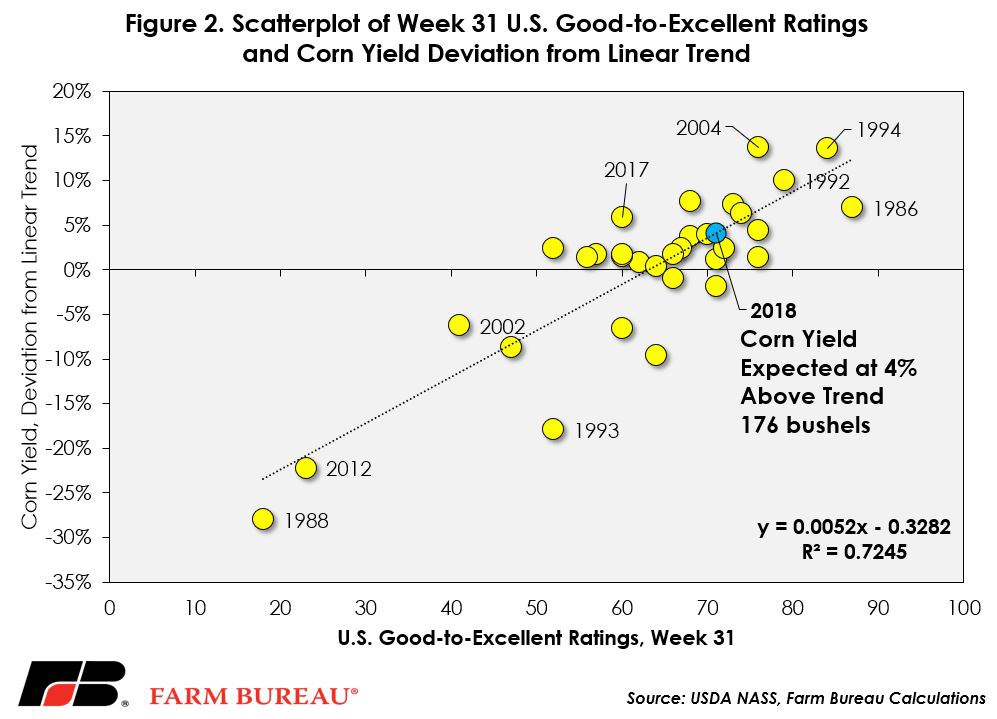
Above-Trend Soybean Yields Anticipated
Currently, the soybean crop is estimated at 67 percent in good-to-excellent condition, down 3 percentage points from last week. Soybean poor-to-very-poor crop conditions increased to 10 percent, up 2 percentage points from last week’s 8 percent. Like corn conditions, year-over-year there is still a substantial improvement with good-to-excellent crops up 7 percentage points from 2017 and 1 percentage point from the five-year average of 66 percent. As is the case with corn, soybean growing conditions have been favorable across much of the Corn Belt and down into the Southeast. Figure 3 highlights the good-to-excellent rating for soybeans as of the week ending August 5.
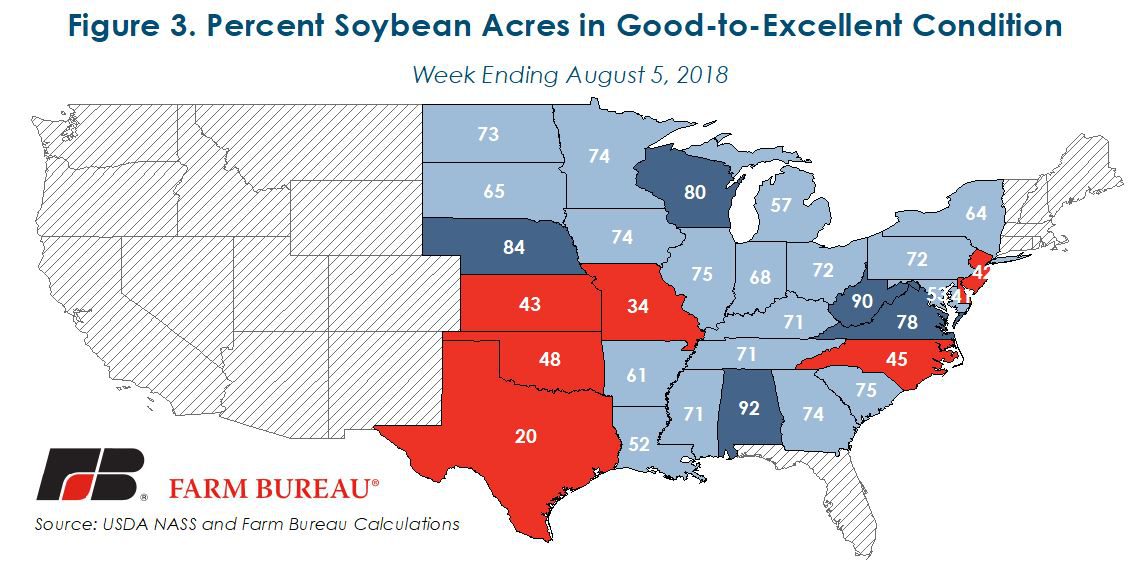
Based on a linear-trend of soybean yields from 1960 to 2017, soybean yields in 2018 are projected at 46.6 bushels per acre. USDA’s current projection is for soybean yields in 2018 to average 48.5 bushels per acre. However, based on the favorable growing conditions, analysts expect U.S. average soybean yields to approach 50 bushels per acre.
Like corn, the historical relationship between good-to-excellent ratings and crop yield deviations supports the market expectation for above-trend yields and reveals that crop ratings are a statistically significant determinant of crop yields. Figure 4 highlights the relationship, and model fit, of soybean good-to-excellent ratings and yield deviations from a linear trend. Based on the model results, and the August 5 good-to-excellent rating of 67 percent, the soybean yield deviation from trend is projected at 6.81 percent and implies a final soybean yield of 49.7 bushels per acre – also in line with industry expectations.
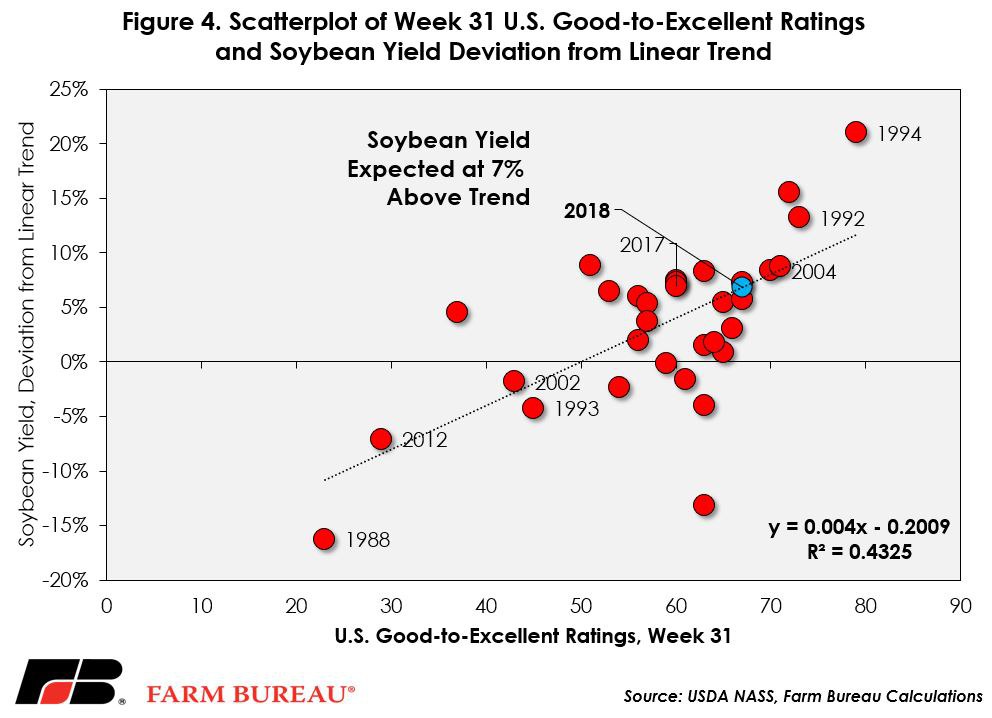
Summary
USDA’s August Crop Production report will provide the first survey-based estimate of corn and soybean yields, harvested area and production for the U.S. Currently, Farm Bureau analysis and industry expectations are for above-trend corn and soybean yields of 176 bushels per acre and 50 bushels per acre, respectively.
There remains considerable uncertainty on the final size of the crops. July brought warmer than average temperatures and total precipitation amounts below average for much of the Midwest and Northwest. With some moderate rainfall in the past week throughout the Corn Belt, the outlook for conditions to hold through harvest remains positive.
Current projections are for corn prices to average $3.80 per bushel and for soybeans to average $9.25 per bushel. However, due to favorable growing conditions, the size of the corn and soybeans crops is likely to go beyond the current projection of 14.2 billion and 4.3 billion bushels, respectively. An increase in the crop size without an increase in total use – a probable scenario given the status of agricultural trade – would likely result in higher ending stocks and lower prices for new-crop corn and soybeans.
